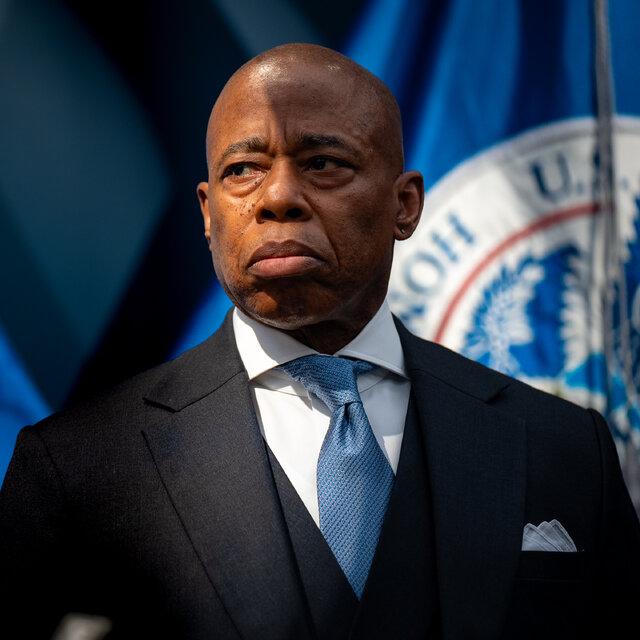Rethinking Gifted and Talented Education in New York City
Mayoral candidate Zakir Mamdani has ignited a heated discussion by proposing a substantial overhaul of New York City’s Gifted and Talented (G&T) program. His plan calls for the removal of the early admissions segment, which he argues disproportionately benefits children from wealthier families and perpetuates educational inequities. Mamdani envisions a more equitable framework that prioritizes personalized learning experiences and citywide enrichment initiatives accessible to all students, rather than privileging a select group.
This proposal has met strong opposition from former Governor Andrew Cuomo, who warns that dismantling parts of the G&T program could be “detrimental” to the city’s academic standards. Cuomo stresses the importance of early identification in cultivating exceptional talent and cautions that eliminating this could weaken the city’s commitment to academic excellence. Below is a comparative overview of their positions:
| Focus Area | Mamdani’s Proposal | Cuomo’s Perspective |
|---|---|---|
| Program Structure | Remove early admissions, broaden access | Preserve early talent identification |
| Equity Considerations | Combat socio-economic disparities | Concerned about lowering standards |
| Educational Impact | Foster inclusive, diverse learning | Maintain rigorous academic environment |
- Advocates argue the changes could democratize gifted education and reduce systemic bias.
- Opponents caution that gifted students might lose critical developmental opportunities.
Cuomo Warns Against Changes, Calls Them Harmful to Educational Opportunity
Andrew Cuomo has publicly criticized Mamdani’s plan to curtail parts of the Gifted and Talented program, asserting that it would significantly diminish educational opportunities, particularly for students from underserved backgrounds who depend on accelerated learning tracks. Cuomo described the proposal as harmful, suggesting it risks dismantling a system designed to foster academic achievement among diverse student populations.
- Cuomo underscores the necessity of programs that support gifted learners’ growth.
- He cautions that such policy shifts could unintentionally widen achievement gaps.
- This debate encapsulates the broader tension between equity and excellence in NYC’s education system.
| Policy Element | Cuomo’s Viewpoint | Mamdani’s Plan |
|---|---|---|
| Gifted Program Scope | Preserve and expand | Partial elimination |
| Access to Opportunity | Enhance availability | May restrict access |
| Equity Strategy | Support multiple pathways | Focus on integration |
Educational Experts Divided on Proposed Gifted Program Reforms
Specialists in education remain split regarding the potential impact of revising the Gifted and Talented program as suggested by mayoral candidate Zakir Mamdani. Proponents argue that reallocating resources away from exclusive programs could promote fairness by extending opportunities to a broader range of students across New York City. They emphasize that such reforms could better serve historically marginalized communities and help close persistent achievement gaps. Supporters highlight benefits such as:
- Increased access for underrepresented student groups
- Curriculum flexibility tailored to diverse learning styles
- Encouragement of inclusive classroom settings
On the other hand, critics, led by Cuomo, caution that reducing the scope of the Gifted and Talented program risks compromising academic rigor and limiting opportunities for high-performing students. Cuomo has described these changes as “detrimental” to educational quality, fearing a loss of specialized instruction that drives innovation and excellence. The table below summarizes the main viewpoints:
| Group | Stance | Key Concern |
|---|---|---|
| Equity Advocates | Favor Reform | Address educational inequities |
| Academic Experts | Oppose Reform | Preserve academic rigor |
| Community Stakeholders | Mixed Opinions | Balance fairness and excellence |
Strategies for Harmonizing Equity and Academic Excellence in NYC Schools
Building a public school system in New York City that is both equitable and high-achieving requires innovative policy reforms that tackle entrenched disparities without sacrificing educational quality. Experts recommend targeted funding, enhanced professional development focused on culturally responsive teaching, and expanded access to advanced coursework for students from historically underserved communities. These initiatives aim to break down systemic barriers that have long hindered equitable access to academic excellence.
Key recommendations include:
- Adopting holistic admissions processes that assess a broad range of student talents beyond standardized test scores.
- Investing in early childhood education to ensure all children develop strong foundational skills.
- Increasing transparency and fostering community involvement in the design and execution of educational programs.
- Implementing continuous monitoring and refinement to maintain fairness while upholding academic standards.
| Recommendation | Anticipated Outcome |
|---|---|
| Holistic Admissions | Greater diversity among gifted students |
| Early Childhood Investment | Improved readiness for academic challenges |
| Community Engagement | Enhanced trust and stakeholder support |
| Ongoing Evaluation | Responsive and equitable policies |
Conclusion: Education at the Heart of NYC’s Mayoral Race
As the New York City mayoral campaign intensifies, education policy remains a central and divisive issue. With Zakir Mamdani advocating for the partial elimination of the Gifted and Talented program and Andrew Cuomo denouncing the plan as harmful, voters face a critical choice about the future direction of the city’s schools. The ongoing debate over how best to balance educational equity with academic excellence will undoubtedly influence the outcome of this pivotal election and shape the opportunities available to New York’s students for years to come.













